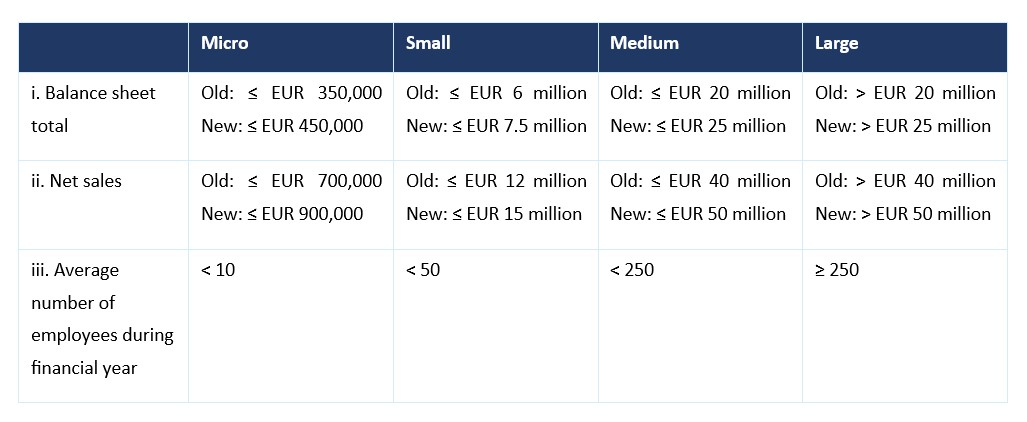Increase in monetary size criteria for Dutch undertakings
The Dutch Minister for Legal Protection recently increased the monetary size criteria by decree dated 5 March 2024, the so-called Implementation Decree on Directive Raising Limit Amounts (Implementatiebesluit Richtlijn verhoging grensbedragen) (the Decree). The size criteria are the thresholds on the basis of which, among other things, it is assessed which annual account exemptions a Dutch legal entity is entitled to.
The requirements for preparing and publishing financial statements differ according to the size category of the legal entity. Micro, small and medium-sized legal entities are subject to a less burdensome legal regime than large Dutch legal entities, as they can rely on certain exemptions. For example, the Dutch legal entity that qualifies as a micro or small legal entity does not have to prepare a management report or have its financial statements audited by an auditor, while these obligations apply to medium and large Dutch legal entities.
In October 2023, the European Commission decided to increase the monetary size criteria. With the entry into force of the Decree, the Directive 2013/34/EU (the Accounting Directive), as amended as of 17 October 2023, will be implemented in Dutch law. The old and new size criteria are listed below.

There are four categories of legal entities that can be distinguished: micro, small, medium and large. The category a legal entity falls into is assessed on the basis of three criteria: (i) balance sheet total, (ii) net turnover and (iii) average number of employees during the financial year. If a legal entity meets two of the three criteria specified for this purpose for two consecutive financial years, the legal entity falls within the relevant category. The Decree changes only the first two size criteria, the monetary size criteria.
The reason for the amendment to the Accounting Directive is the significant inflation in the eurozone over the past few years. The size criteria were last changed in 2013 and the amounts are no longer in line with the inflation, according to the European Commission. The size criteria have therefore been increased by around 25%, a percentage that is almost in line with the inflation rate in the eurozone since 2013.
The adjusted size criteria will apply from the 2024 financial year and Dutch legal entities may choose to apply the new size criteria also for the 2023 financial year. For small legal entities that qualify as a medium-sized legal entity under the old size criteria, this may be desirable. Under the old size criteria they qualify as a medium-sized legal entity. However under the new, increased size criteria they may still qualify as a small legal entity and consequently they will be subject to the lightened annual accounts regime. For example, these legal entities are exempt from the annual audit and the requirement to prepare a management report. These exemptions can no longer be claimed once a legal entity qualifies as a medium or large legal entity. The increase in the monetary size criteria will thus reduce the number of legal entities subject to audit.


